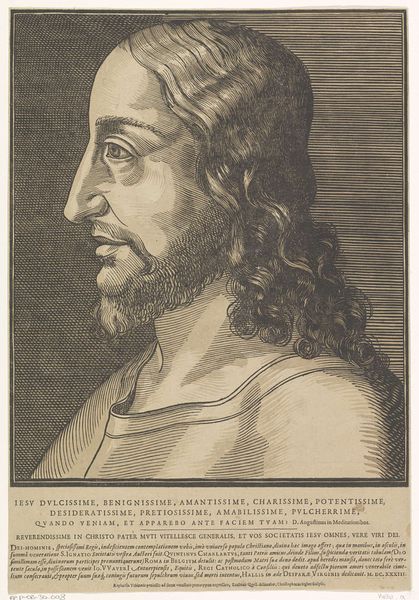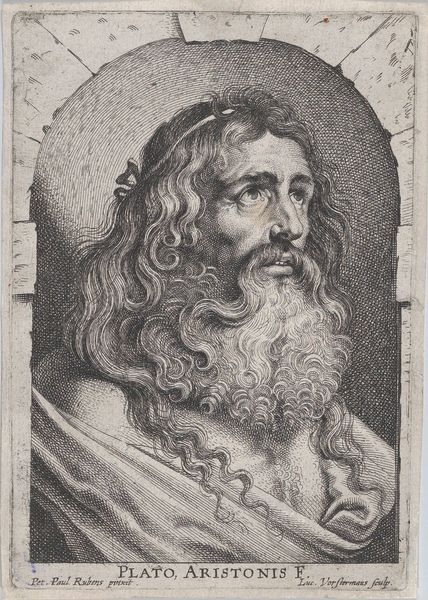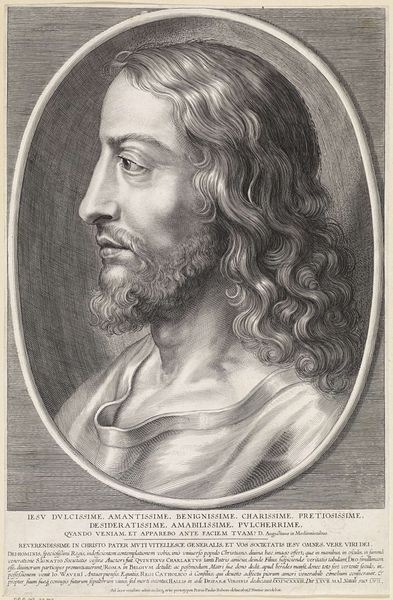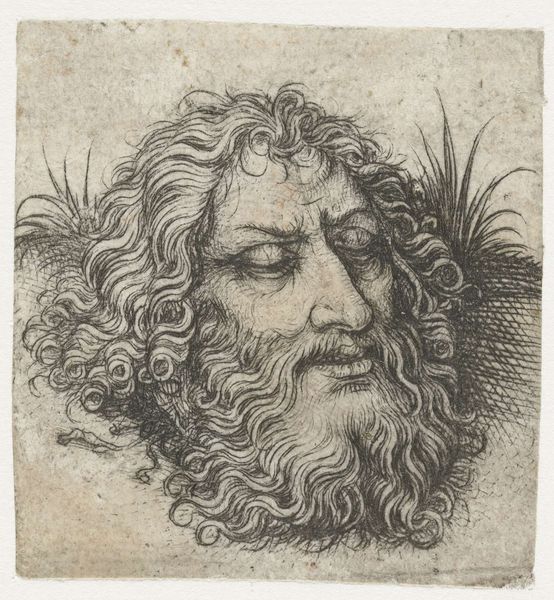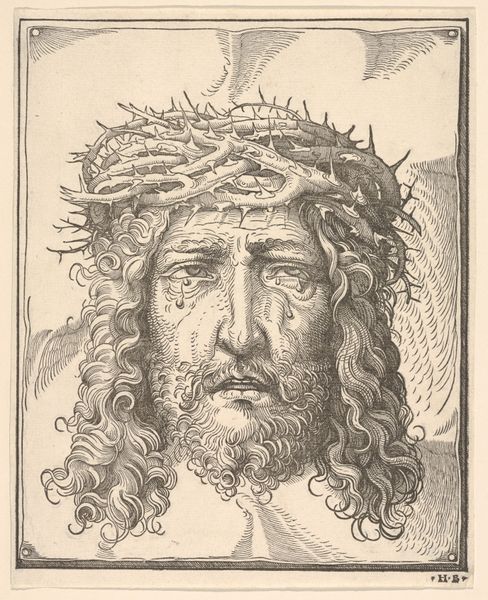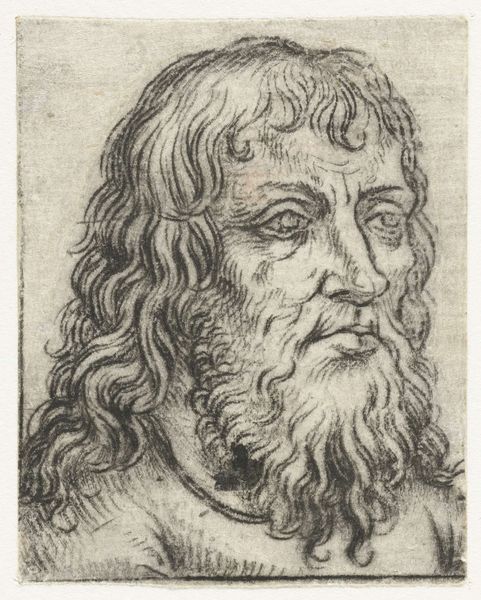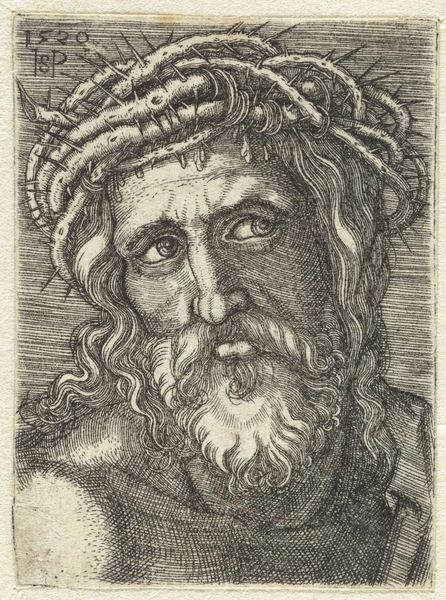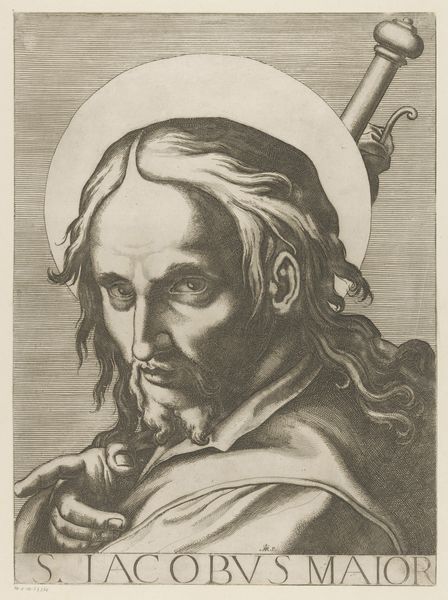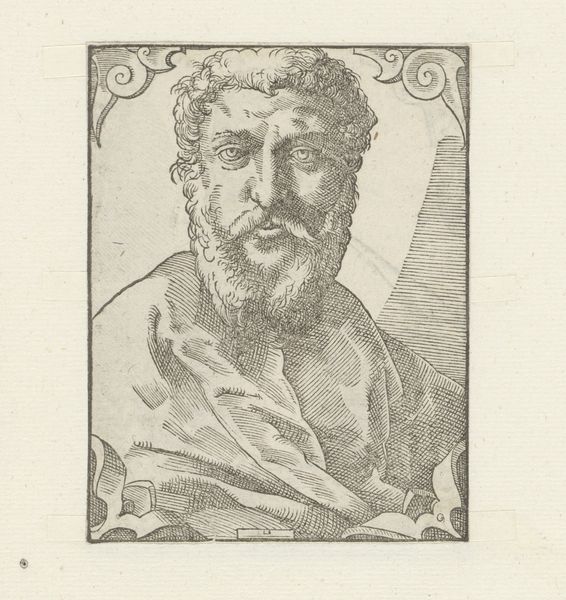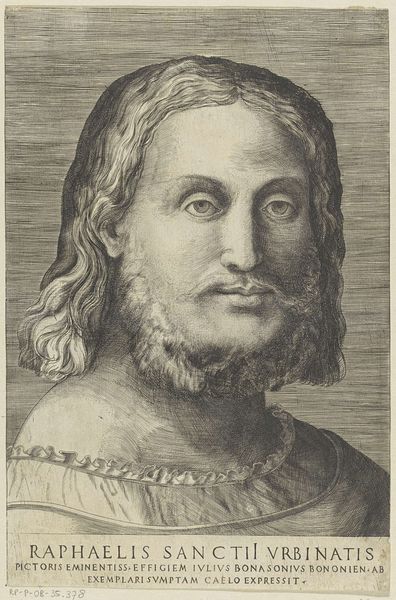
engraving
#
portrait
#
baroque
#
figuration
#
line
#
engraving
Dimensions: height 342 mm, width 250 mm
Copyright: Rijks Museum: Open Domain
Curator: Take a moment to regard this image entitled "Head of Christ," an engraving crafted in the 17th century by the artist known only as Monogrammist NB from Italy. Editor: The first thing that strikes me is the somber tone despite the baroque flourish of the hair. The line work, although delicate, adds a layer of solemnity to the subject’s face. It's almost melancholic. Curator: The weight of history is certainly palpable here. Baroque art often uses drama and intensity to evoke emotion, and in religious imagery, that intensity served to connect the viewer with the divine, but it was used in politics to impress with majesty and granduer too. What symbols resonate for you as an iconographer when looking at this face? Editor: The gaze. He’s not looking at us directly, yet the slightly averted eyes suggest a profound interiority, which creates a feeling of understanding beyond sight. The halo, while simple, suggests not only divinity but perhaps also the inherent light within humanity. It connects with persistent imagery of divine presence throughout vastly different cultural contexts. Curator: The use of line in this print emphasizes a certain vulnerability, don't you think? Baroque paintings typically highlight light, volume, and sensuality of color. This engraving translates Baroque artistic principles using sparse, sharp lines, stark tonal contrasts which shape his brow, cheeks, and beard, and the linear hatchwork on the cloak which provide a real tactile experience. This medium encourages a powerful sense of reflection in the viewer. The print is made to touch your senses. Editor: Absolutely. Line, in many ways, allows for a stripping away of artifice, revealing an almost archetypal image of compassion and human understanding in the divine figure. In different eras, the image of Christ shifts to represent certain ideological messages, doesn't it? What statement do you think that an artwork of this Christ may carry? Curator: The historical placement of the engraving amidst religious conflicts is important; such portraits became central for various expressions of Christian life, from state-sponsored grandiosity to individual meditative practice. This imagery helps us recognize the dynamic exchange between popular belief and powerful art commissions. The proliferation of this figure became vital for a very particular and fraught historical moment. Editor: Looking at this Hoofd van Christus, I see not just an artistic representation but a concentrated symbol resonating with meaning over centuries, its somber mood inviting introspection. It reveals our cultural memory. Curator: I agree completely. This artwork offers us an invitation to consider how sociopolitical and personal views converge, intertwine, and continue to evolve within the realm of imagery.
Comments
No comments
Be the first to comment and join the conversation on the ultimate creative platform.
